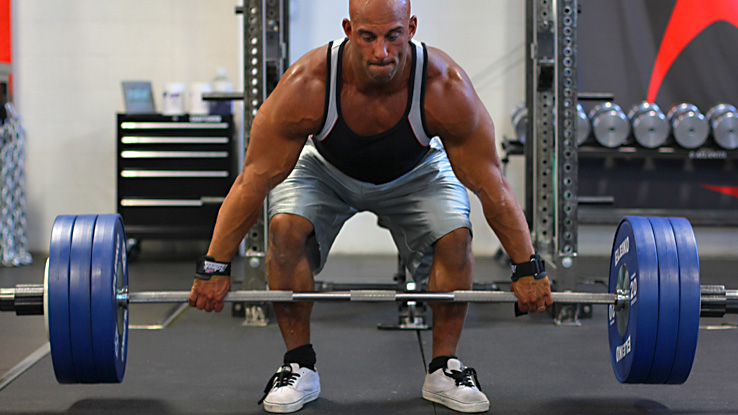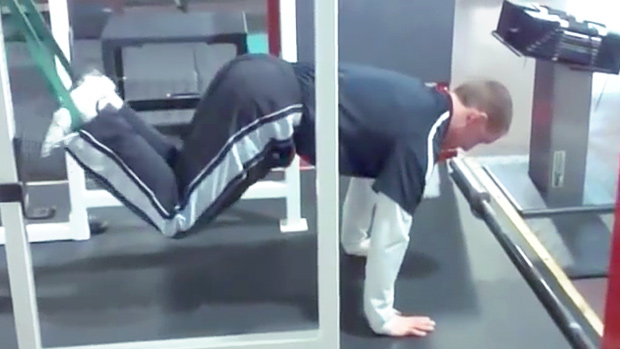Here's what you need to know...
- Increasing the time under tension at your weakest point of a lift is a sneaky way to get stronger while sparing your joints.
- Double-paused deadlifts are like a standard deadlift except you pause twice – once just after breaking the floor and once again at knee level.
- The "magic" behind double-paused deadlifts is they quickly clean up deadlifting form, and a lifter with better technique is a stronger lifter.
Most deadlift misses can be attributed to one of four reasons:
- You're too weak.
- You're on your toes or too far back when the bar breaks the floor.
- You're too far forward when the bar reaches your knees.
- Your grip is weak.
Simply deadlifting and doing standard conventional accessory work fixes the first problem, but double-paused deadlifts efficiently kill the last three birds with just one stone.
Double-paused deadlifts work by increasing the time under tension at the points in the deadlift where you're the weakest. I learned this from Kameron Ross, who pulled 661 at 216 pounds. He was using a modified Sheiko template, and he swapped out the Sheiko-standby "deadlift to knee" for double-paused deadlifts. I watched as his deadlift climbed from the mid-500s to the mid-600s in a matter of months, which is pretty rare when you're already pulling over 500.
I gave them a shot and they worked, so I rotated them in with some of my programming clients and they all made big deadlift gains. The success I was seeing with double-paused deadlifts raised one big question, however. How the heck do they work?
You can't use much weight in the beginning – at least with good form – and even when you get good at them, sticking with weights between 40% and 70% of your 1RM seems to work best.
So herein lies the paradox: Paused deadlifts can add serious poundage to your deadlift 1RM, but the pauses mean you aren't training rate of force development efficiently, and the puny weights you're using (especially at first) don't provide much of a hypertrophy stimulus.
I suspect they work so well because double-paused deadlifts teach you how to deadlift.
But I Know How To Deadlift!
Take a breather, tough guy. Just because you've been deadlifting for years doesn't mean you're a great deadlifter, and the fact that you can throw some weight around without getting hurt doesn't mean you've got flawless form. In short, there's always room for improvement.
In my case, my deadlift had been struggling. I was getting weaker and my groove was feeling increasingly inconsistent. Something needed to change, so I added double-paused deadlifts into my next deadlift warm-up.
After several sets, I could feel the weight shifting back to my heels, my shoulders getting behind the bar, and my hips locking into a better position to drive the bar to lockout.
When I dropped the pauses and slapped more weight onto the bar, I flew right past weights that I'd been missing recently. All said, it took just four sets of double paused deadlifts to relearn the deadlift and undo months of bad habits.
Adding Double-Paused Deadlifts
There are three ways to implement double-paused deadlifts:
- Use them as your warm-up sets before your normal deadlift workout. No other changes to your training are needed – just do sets of 3-5 double-paused deadlifts with each warm-up weight, pausing for about 2-3 seconds when the bar breaks the floor, and again at knee height. When you feel yourself starting to lose neutral spine position during your pauses, it's time to switch over to regular reps.
- Use them as accessory work on your main deadlift day. Similar to doing paused squats or front squats after back squats, just add double-paused deadlifts for 3-5 sets of 3-8 reps after your regular deadlift work sets.
- Use them to practice technique on another training day. By doing double-paused deadlifts on another day of the week, your technique on regular deadlifts should feel much crisper when deadlift day rolls back around. Do 3-8 sets of 3-5 reps.
Double Thumbs Up!
Few things in life are more distressing than a long, dry deadlifting slump. Rather than bust out the standard macho bullshit advice ("Pull harder, Nancy-boy!"), try adding this interesting variation of the standard pull into your deadlifting repertoire. You might soon see that insufferable plateau transform into a shiny new PR.





